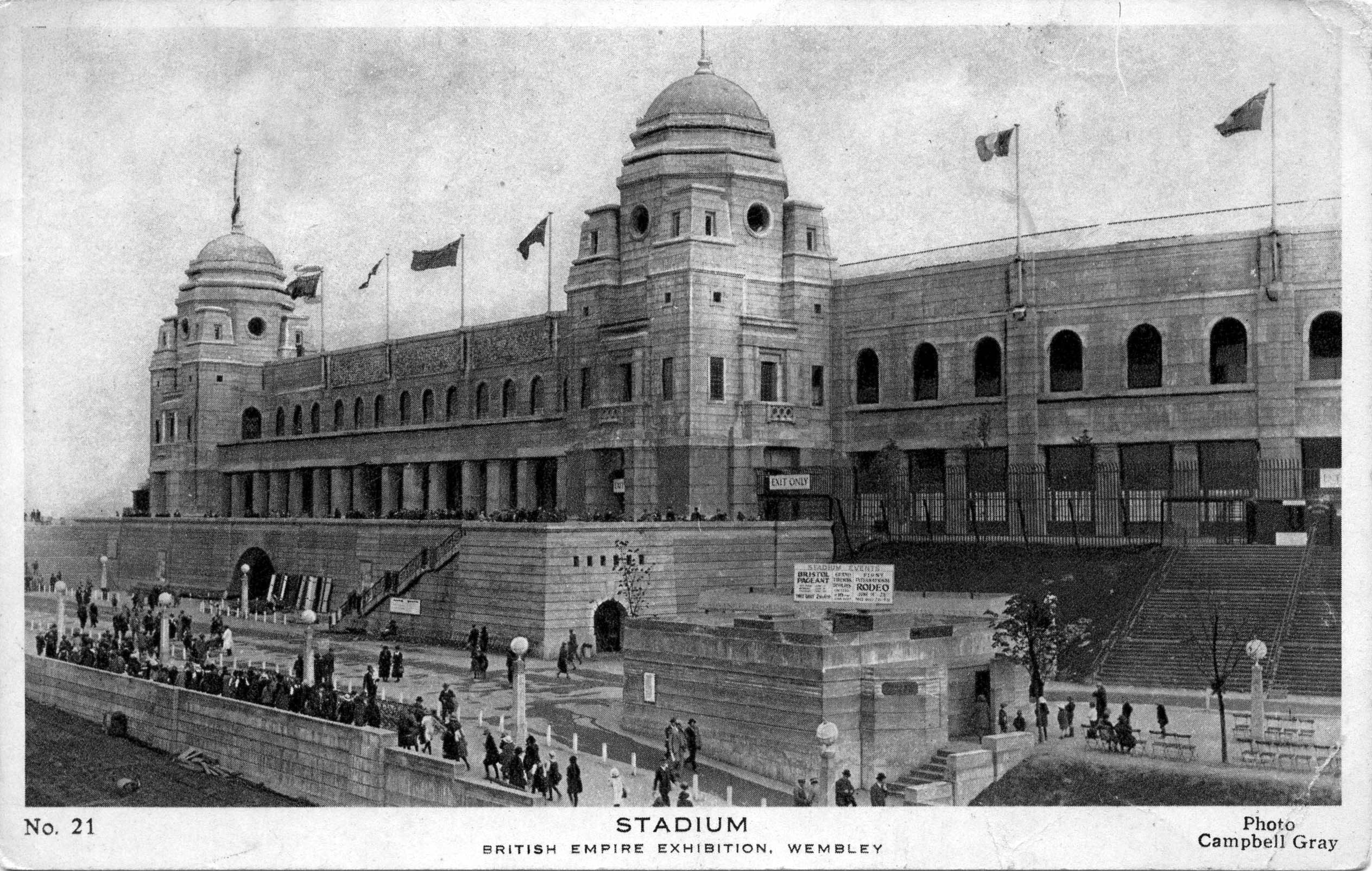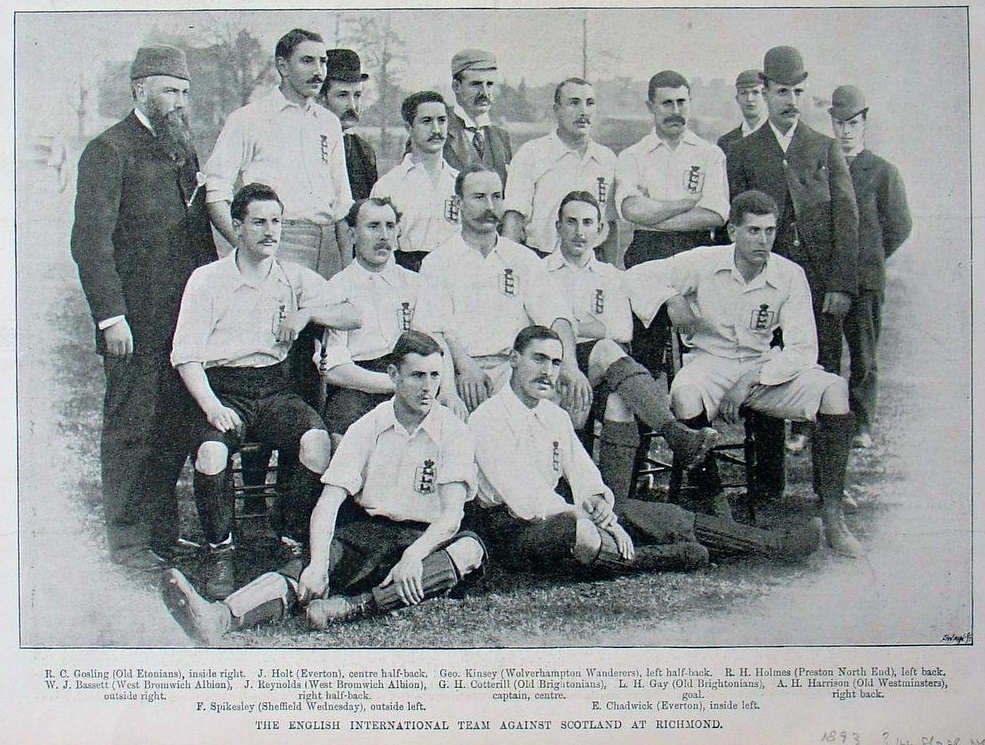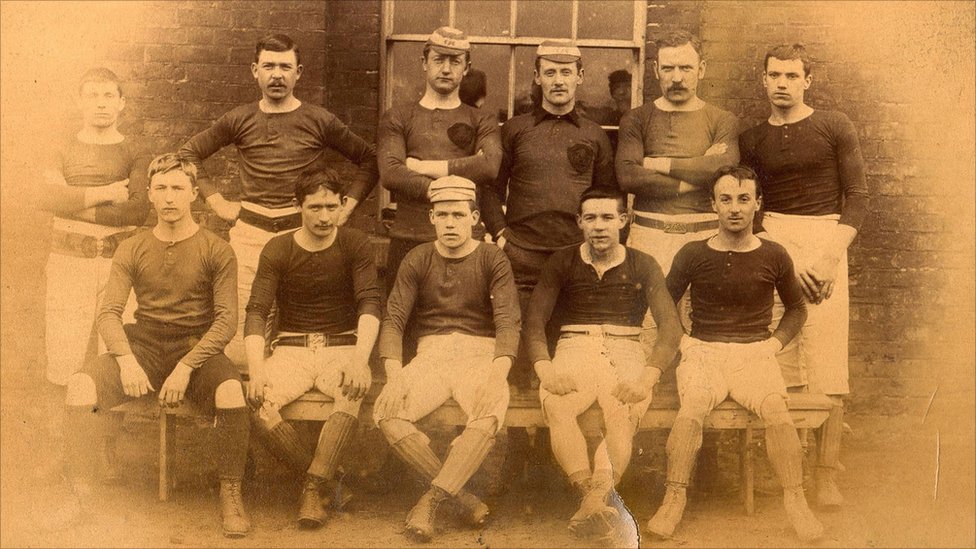|
Jimmy Dunn (footballer, Born 1900)
James Dunn (25 November 1900 – 20 August 1963) was a Scottish international footballer, most famous for being part of the 1928 ''Wembley Wizards'' team. Club career Dunn, born in Glasgow and nicknamed "ginger" due to the colour of his hair, started his senior career in 1920 when Hibernian signed him from his local Junior side St Anthony's. He stayed eight years with the Edinburgh club (304 matches, 103 goals in the Scottish Football League and Scottish Cup) helping them to consecutive Scottish Cup finals in 1923 and 1924, although he collected a runners-up medal on each occasion. Dunn joined Everton immediately after his Wembley escapades and played with the Merseyside club for the next 7 seasons. He won a Second Division championship and Football League championship with the ''Toffees'' in consecutive seasons (1931 and 1932) and was part of their FA Cup winning side of 1933, scoring in the final itself. After scoring 49 goals in 155 matches for Everton, he left Goodis ... [...More Info...] [...Related Items...] OR: [Wikipedia] [Google] [Baidu] |
Wembley Wizards
The Wembley Wizards is the nickname for the Scotland national football team that crushed England 5–1 at Wembley in the 1928 British Home Championship. Background Scotland had failed to win either of their previous matches in the 1928 British Home Championship, losing 1–0 to Ireland at Hampden Park and drawing 2–2 with Wales in Wrexham. England had lost their first two games, 2–0 to Ireland in Belfast and 2–1 in Burnley to the eventual champions Wales. England's recent record against Scotland was poor, having only won once against Scotland in the 1920s. That solitary win had come in the previous match between the teams, a 2–1 win at Hampden in the 1927 British Home Championship that gave England a share of the championship with Scotland. The Scottish Football League XI had lost 6–2 to the Football League at Hampden on 10 March. An international trial match was played on the following Tuesday between the ''Anglos'' and ''Home Scots''.Scottish players playing in the ... [...More Info...] [...Related Items...] OR: [Wikipedia] [Google] [Baidu] |
1923–24 Scottish Cup
The 1923–24 Scottish Cup was the 46th staging of Scotland's most prestigious football knockout competition. The Cup was won by Airdrieonians, who defeated Hibernian 2–0 in the final. Fourth round Semi-finals ---- Replay ---- Second Replay ---- Final The 1924 Scottish Cup Final was a one sided game with Airdrie rarely in trouble. Bob Bennie at left half dictated much of the play. Airdrie's Bob McPhail said, "Hughie Gallacher caused havoc with the Hibs defenders. He and Russell were easily our best forwards." Russell scored both goals.The Cup Final , Airdrieonians' First Success The Glasgow Herald, 21 April 1924 [...More Info...] [...Related Items...] OR: [Wikipedia] [Google] [Baidu] |
Jimmy Dunn (footballer, Born 1923)
James Dunn (25 November 1923 – 31 December 2014) was a Scottish footballer, who spent the majority of his league career with Wolverhampton Wanderers. He was the son of a Scottish international footballer, also named Jimmy Dunn. Career Born in Edinburgh but raised in Liverpool after his father transferred from Hibernian to Everton, Dunn junior joined Wolves as an apprentice in 1941, signing professionally the following year. The start of his official league career was delayed due to World War II, during which Dunn worked as a fireman. He made 100 unofficial wartime appearances for Wolves, but was mostly in the reserves when league football resumed in the 1946/47 season. He made just three first team appearances, but one of those was a league championship decider that Wolves lost 2–1 to Liverpool. He broke through in the following campaign and was also a regular player in the next season, which saw him win the 1949 FA Cup. A back injury sidelined him for most of the 194 ... [...More Info...] [...Related Items...] OR: [Wikipedia] [Google] [Baidu] |
Home Scots V Anglo-Scots
Home Scots v Anglo-Scots was an annual association football trial match organised by the Scottish Football Association between the 1890s and 1920s to examine the abilities of possible players for upcoming full British Home Championship internationals, primarily the 'Auld Enemy' England v Scotland fixture. Selection trials were commonplace among football federations, but this match was unusual in that its regular format consisted of players based in one country (the 'homes') facing a selection of those who had moved to another country (the 'Anglos'), in order to form a combined team to oppose that other country's natives in international play. Background From the advent of modern football in the 1860s, the relationship between the sporting communities of England and Scotland was one of its defining factors beyond local level. The development of tactics, styles and practices was evidenced in matches between the national teams from the first unofficial meetings in 1870 followed by th ... [...More Info...] [...Related Items...] OR: [Wikipedia] [Google] [Baidu] |
British Home Championship
The British Home Championship * sco, Hame Internaitional Kemp * gd, Farpais lìg eadar-nàiseanta * cy, Pencampwriaeth y Pedair Gwlad, name=lang (historically known as the British International Championship or simply the International Championship) was an annual football competition contested between the United Kingdom's four national teams: England, Scotland, Wales, and Ireland (the last of whom competed as Northern Ireland starting from the late 1950s). Beginning during the 1883–84 season, it is the oldest international association football tournament in the world and it was contested until the 1983–84 season, when it was abolished after 100 years. History Overview The first international association football match, between Scotland and England, took place in November 1872. Following that contest, a schedule of international matches between the four home nations gradually developed, the games taking place between January and April of each year. In 1884, for the first ti ... [...More Info...] [...Related Items...] OR: [Wikipedia] [Google] [Baidu] |
Wembley Stadium (1923)
The original Wembley Stadium (; originally known as the Empire Stadium) was a stadium in Wembley, London, best known for hosting important football matches. It stood on the same site now occupied by its successor. Wembley hosted the FA Cup final annually, the first in 1923, which was the stadium's inaugural event, the League Cup final annually, five European Cup finals, the 1966 World Cup Final, and the final of Euro 1996. Brazilian footballer Pelé once said of the stadium: "Wembley is the cathedral of football. It is the capital of football and it is the heart of football", in recognition of its status as the world's best-known football stadium. The stadium also hosted many other sports events, including the 1948 Summer Olympics, rugby league's Challenge Cup final, and the 1992 and 1995 Rugby League World Cup Finals. It was also the venue for numerous music events, including the 1985 Live Aid charity concert. In what was the first major WWF (now WWE) pay-per-view ... [...More Info...] [...Related Items...] OR: [Wikipedia] [Google] [Baidu] |
England National Football Team
The England national football team has represented England in international Association football, football since the first international match in 1872. It is controlled by The Football Association (FA), the governing body for football in England, which is affiliated with UEFA and comes under the global jurisdiction of world football's governing body FIFA. England competes in the three major international tournaments contested by European nations: the FIFA World Cup, the UEFA European Championship, and the UEFA Nations League. England is the joint oldest national team in football having played in the world's 1872 Scotland v England football match, first international football match in 1872, against Scotland national football team, Scotland. England's home ground is Wembley Stadium, London, and its training headquarters is St George's Park National Football Centre, St George's Park, Burton upon Trent. The team's manager is Gareth Southgate. England won the 1966 FIFA World Cup F ... [...More Info...] [...Related Items...] OR: [Wikipedia] [Google] [Baidu] |
Cap (sport)
In sport, a cap is a player's appearance in a game at international level. The term dates from the practice in the United Kingdom of awarding a cap to every player in an international match of rugby football and association football. In the early days of football, the concept of each team wearing a set of matching shirts had not been universally adopted, so each side would distinguish itself from the other by wearing a specific sort of cap. An early illustration of the first international football match between Scotland and England in 1872 shows the Scottish players wearing cowls, and the English wearing a variety of school caps. The practice was first approved on 10 May 1886 for association football after a proposal made by N. Lane Jackson , founder of the Corinthians: The act of awarding a cap is now international and is applied to other sports. Although in some sports physical caps may not now always be given (whether at all or for each appearance) the term ''cap'' for a ... [...More Info...] [...Related Items...] OR: [Wikipedia] [Google] [Baidu] |
Tynecastle Stadium
Tynecastle Park is a football stadium in the Gorgie area of Edinburgh, which is the home ground of Scottish Professional Football League club Heart of Midlothian (Hearts). It has also hosted Scotland international matches, and been used as a neutral venue for Scottish Cup and Scottish League Cup semi-finals. Tynecastle has a seating capacity of , which makes it the sixth-largest football stadium in Scotland. Hearts have played at the present site of Tynecastle since 1886. History After Hearts was formed in 1874, the club played at sites in the Meadows, Powburn and Powderhall. Hearts first moved to the Gorgie area, in the west of Edinburgh, in 1881. This pitch, known as "Tynecastle Park" or "Old Tynecastle", stood on the site of the present-day Wardlaw Street and Wardlaw Terrace. As this site was then regarded as being 'out of town', Hearts would sometimes stage two matches for the price of one, or set an admission price much lower than Edinburgh derby rivals Hibs. In 188 ... [...More Info...] [...Related Items...] OR: [Wikipedia] [Google] [Baidu] |
Wales National Football Team
) , Association = Football Association of Wales (FAW) , Confederation = UEFA (Europe) , Coach = Rob Page , Captain = Gareth Bale , Most caps = Gareth Bale (111) , Top scorer = Gareth Bale ( 41) , Home Stadium = Cardiff City Stadium , FIFA Trigramme = WAL , FIFA Rank = , FIFA max = 8 , FIFA max date = October 2015 , FIFA min = 117 , FIFA min date = August 2011 , Elo Rank = , Elo max = 3 , Elo max date = 1876~1885 , Elo min = 88 , Elo min date = March 2011 , pattern_la1 = _wal22h , pattern_b1 = _wal22h , pattern_ra1 = _wal22h , pattern_sh1 = _wal22h , pattern_so1 = _3_stripes_white , leftarm1 = FF0000 , body1 = FF0000 , rightarm1 = FF0000 , shorts1 = FFFFFF , socks1 = FF0000 , pattern_la2 = _wal22a , ... [...More Info...] [...Related Items...] OR: [Wikipedia] [Google] [Baidu] |
Goodison Park
Goodison Park is a football stadium in the Walton area of Liverpool, England. It has been the home stadium of Premier League club Everton F.C. since its completion in 1892. Located in a residential area 2 miles (3 km) north of Liverpool city centre, it has an all-seated capacity of 39,414. As Everton have only been outside the top division for four seasons, Goodison Park has hosted more top-flight games than any other stadium in England (they were relegated in 1930 and 1951). The stadium has also been the venue for an FA Cup Final and numerous international fixtures, including a semi-final match in the 1966 World Cup, among others. History Before Goodison Park Everton originally played on an open pitch in the south-east corner of the newly laid out Stanley Park (on a site where rivals Liverpool FC considered building a stadium over a century later). The first official match after being renamed Everton from St. Domingo's was at Stanley Park, staged on 20 December 1879 ... [...More Info...] [...Related Items...] OR: [Wikipedia] [Google] [Baidu] |
1933 FA Cup Final
The 1933 FA Cup Final was a football match between Everton and Manchester City on 29 April 1933 at Wembley Stadium in London. The deciding match of English football's primary cup competition, the Football Association Challenge Cup (better known as the FA Cup), it was the 62nd final, and the 11th at Wembley. The 1933 final was the first where the players, including goalkeepers, were issued numbers for identification. Everton were allocated numbers 1–11 and Manchester City numbers 12–22.The 'most novel cup final in the history of football' By Gareth Thomas on The Football History Boys - April 14, 2020 Each team progressed through five rounds to reach the final. Everton won 3–0, with goals from [...More Info...] [...Related Items...] OR: [Wikipedia] [Google] [Baidu] |








